It’s a bone-chilling winter day and you’re sitting in your living room looking out the window thinking “I wish I could be transported to the Caribbean right now…” If you live in a temperate region, like North Carolina, you can likely relate to this scenario. Although there’s nothing you can do to change the seasons where you live, there are ways to bring the vibrancy and warmth of the tropics into your outdoor spaces through landscape plant selections. In this article, we will share our favorite North Carolina landscape plants that emulate a tropical aesthetic and provide ideas for how you can incorporate them into your landscape. We’ll break down our list into categories based on how the plants are classified within the landscape: perennials, shrubs and trees.
Perennials
Perennials are long-lived, non-woody plants. Most of them go dormant in the winter and emerge again in the Spring. However, there is a good selection of evergreen perennials that stay green year-round, a couple of which we will cover in this article. In terms of landscape placement, low-growing perennials are typically used in the foreground of a landscape, under trees, in between step stones, and anywhere that low plantings are needed. Larger perennials can be used as focal points or in large masses. In tropical landscapes, perennials often have unique foliage with contrasting sizes, color and textures.
- Autumn Ferns (Dryopteris erythrosora): These evergreen ferns are known to love moisture and shade, but we’ve noticed they can also handle a little bit of drought. The new growth in Spring is a bronze color that transitions to green as it matures. They have a soft texture that makes you feel like you’re in a tropical rainforest. Key Features: evergreen, shade plant, fine texture, tolerates moist sites, deer and rabbit resistant
- Ogon Sweetflag (Acorus gramineus ‘Ogon’): Ogon Sweetflag (Acorus gramineus ‘Ogon’) is a fine-textured low groundcover that is a VIBRANT lime-green, which gives it a tropical flare. It turns more yellow in the sun. Its extremely versatile – it takes sun or shade, and average to wet soil moisture. In North Carolina, where the soils are clay-heavy, excess soil moisture can often be troublesome in the landscape, but not with Acorus! It loves water and can even be used as an aquatic plant. Another BIG PERK—its completely deer and rabbit tolerant! Key Features: evergreen, fine texture, tolerates wet sites, deer and rabbit resistant
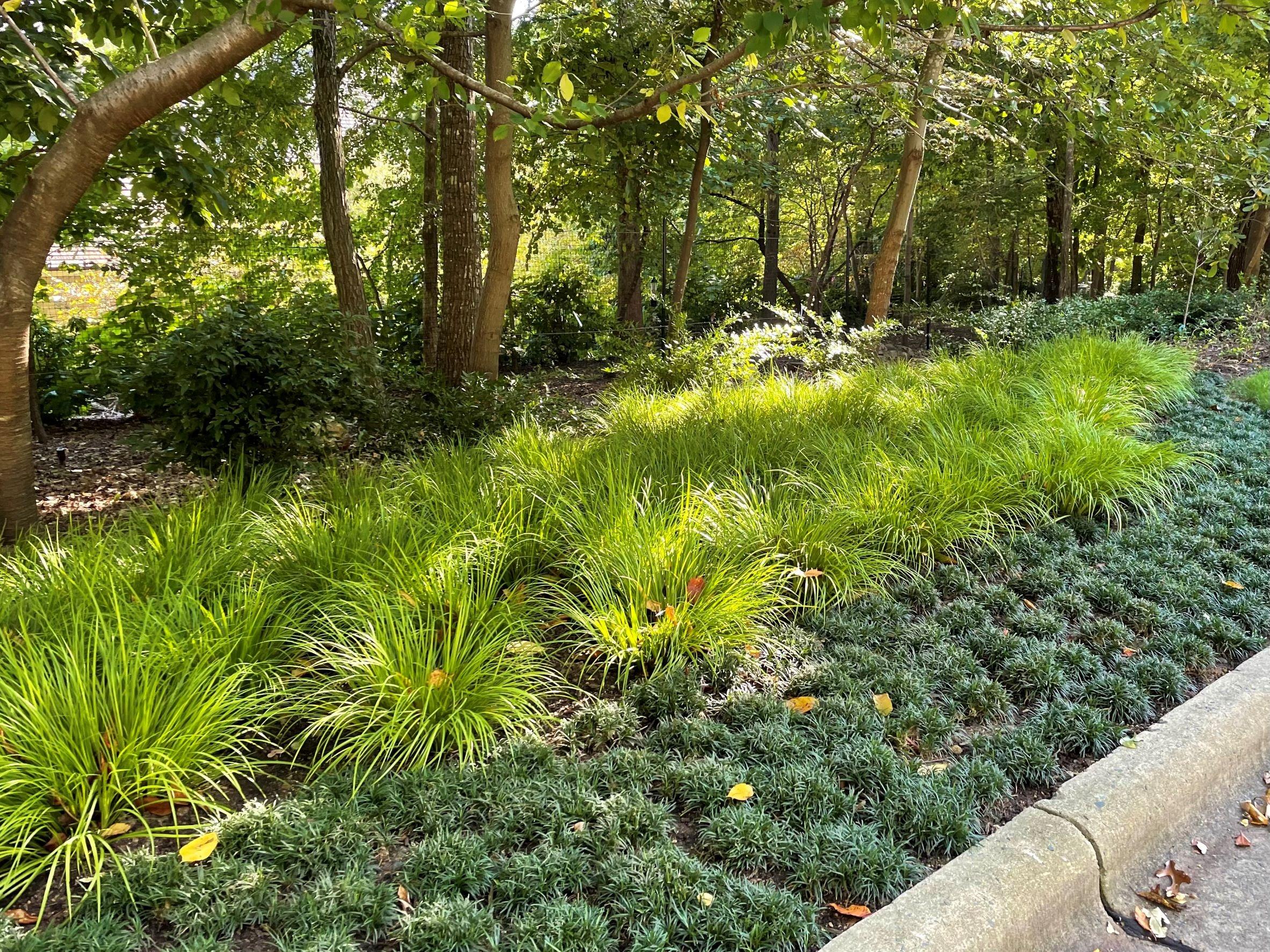
- Elephant Ear (Colocasia spp.): The oversized leaves of elephant ear make a bold statement in the landscape and scream “tropical paradise”. They come in different colors and sizes -- some even have black foliage! Plant this unique perennial in a sun to part sun area, provide plenty of water and watch it grow BIG! Key Features: foliage, course texture, deer and rabbit resistant
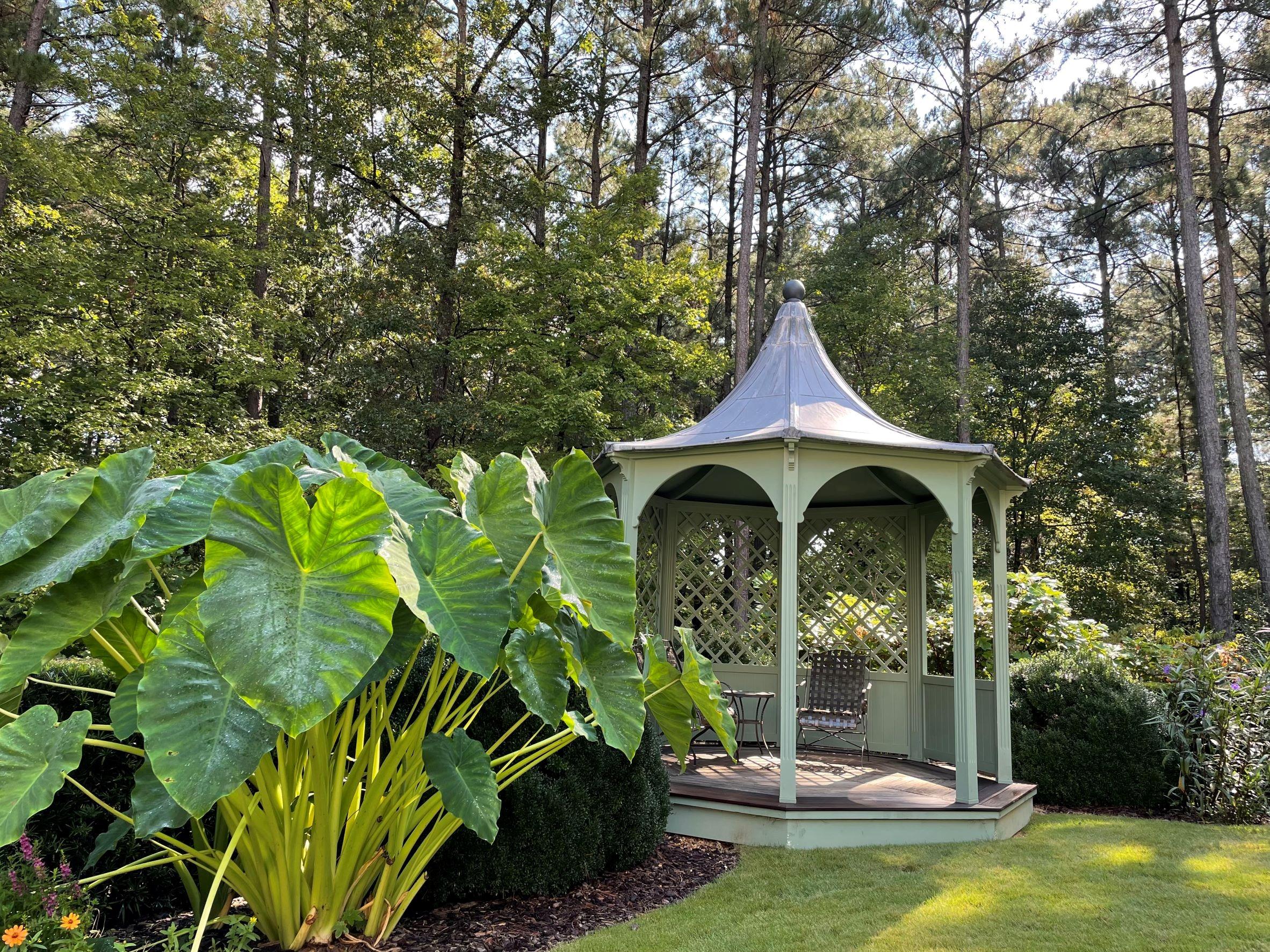
Shrubs
Shrubs form the next planting layer within the landscape. Most people associate the word shrubs with hedges or plants pruned into round shapes. However, shrubs can take on many forms and they more broadly classify any woody ornamental that is smaller than a tree and has multiple main stems coming off the ground. In tropical landscapes, the shrubs tend to have more organic shapes that don’t need much pruning. You can leave behind the perfectly trimmed hedges in French gardens and embrace the natural plant forms of a tropical garden!
- Fatsia (Fatsia japonica): Big, glossy green leaves are about as tropical as it gets. Fatsia is also evergreen and loves moist shade, which can be a tough niche to fill in the landscape! Key Features: evergreen, foliage, course texture, shade plant, tolerates moist sites, deer and rabbit resistant
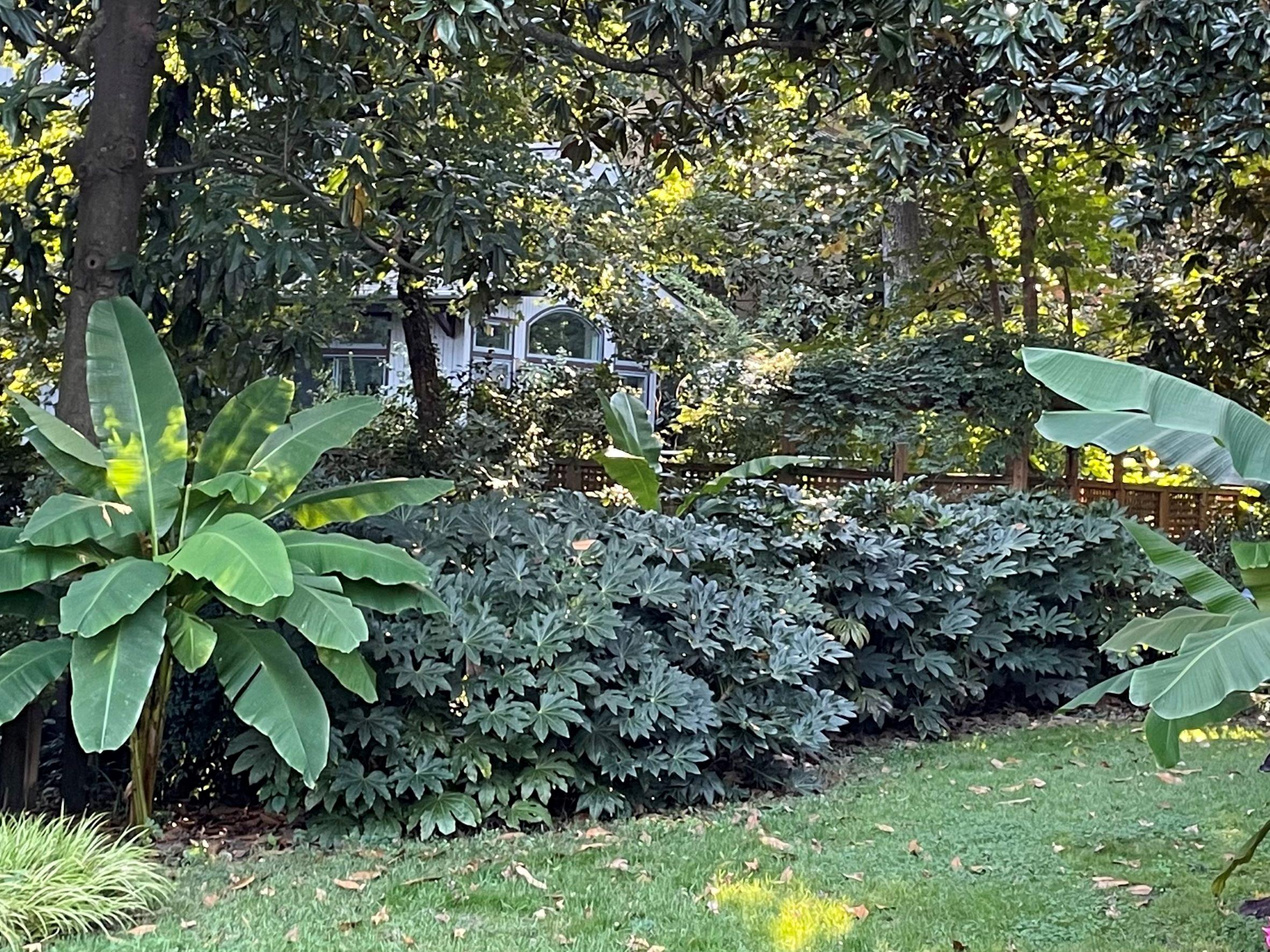
- Paperbush (Edgeworthia chrysantha): Paperbush has a mounding shape and tropical foliage that turns a beautiful yellow in the fall. The best part of this plant is the yellow Winter bloom that completely fills the yard with a wonderful fragrance. Key Features: fragrant bloom, winter interest, fall color, deer and rabbit resistant.
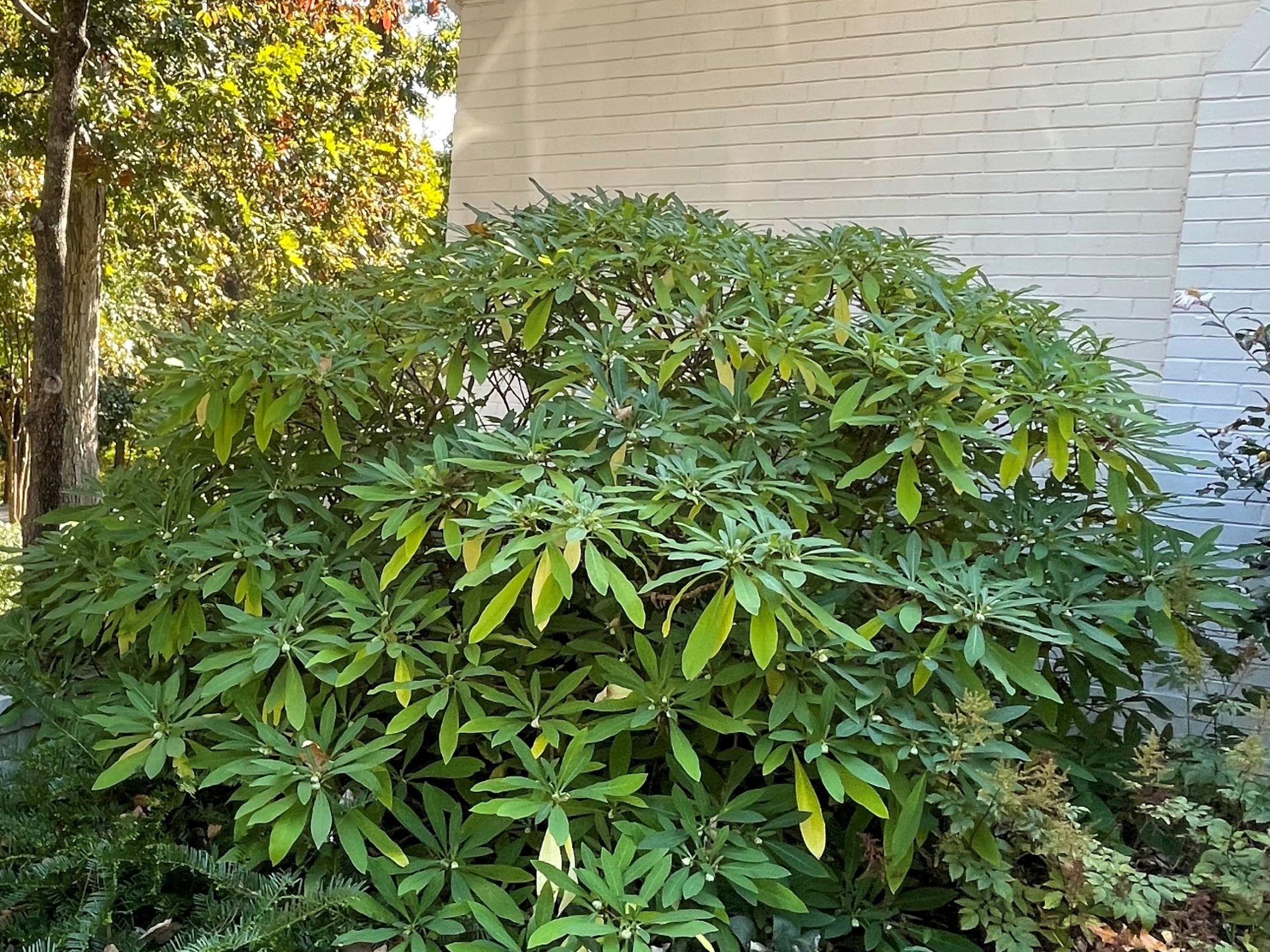
- Gardenia (Gardenia jasminoides): The fragrance of a white Gardenia bloom transports you to the Caribbean in the summer months. Plant these close to areas where you spend time so you can enjoy the fragrance! Key Features: evergreen, fragrant bloom, deer and rabbit resistant
Trees
Trees add a vertical element to the landscape. In tropical landscapes, trees are often used for shade (probably because of the relentless heat and sun in the tropics!), however, they can also serve as a fun focal point.
- Windmill Palm (Trachycarpus fortunei): Every tropical landscape needs a tall palm tree and this is the best one for central and eastern North Carolina. Key Features: evergreen, deer and rabbit resistant
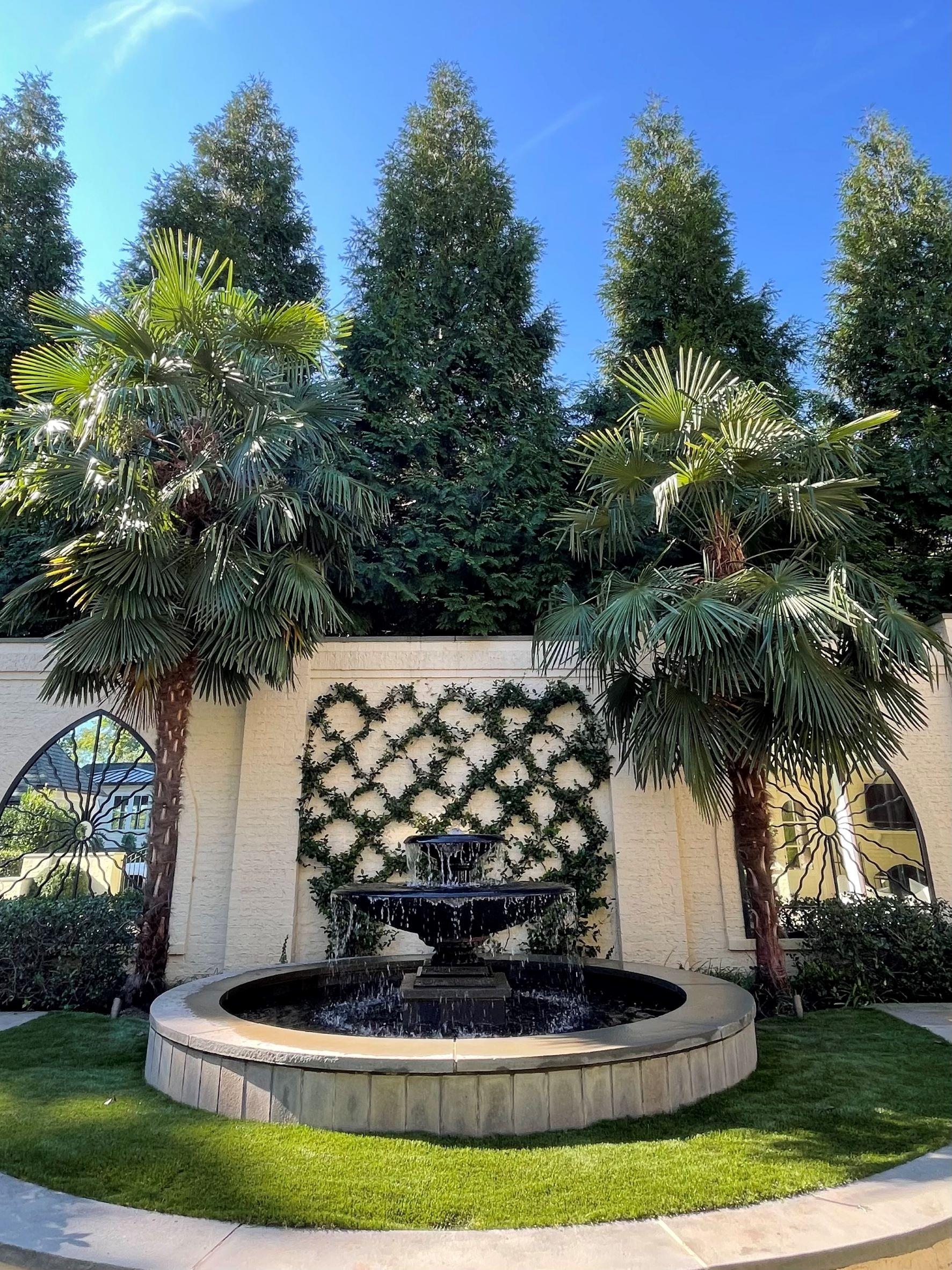
- Rose of Sharon (Hibiscus syriacus): When most people think about a tropical flower, hibiscus is what comes to mind. Rose of Sharon is in the hibiscus family and has the BIG, BRIGHT blooms that are iconic in the tropics. They make excellent trees in North Carolina. Key Features: bloom, deer and rabbit resistant
The most important takeaway is that tropical landscapes are not exclusively for the tropics. You can incorporate the look and feel of the tropics into your landscape no matter where you live by selecting plants that fit within that theme. Bold colors, big shiny leaves, fragrant blooms, and playful textures are all plant qualities to look out for when making “tropical” plant selections for your next landscape project!